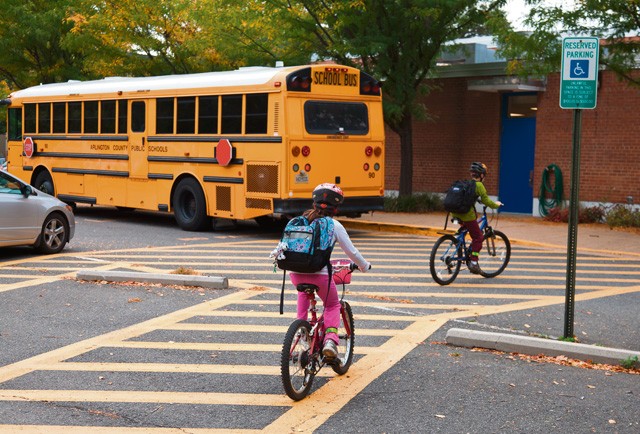It’s that time of the year again — temperatures are lowering and the days are getting shorter. Some may even notice the house is a little quieter which must mean that school is back in session.
Even though this may be good news for most parents, and children, the start of the school year also raises challenges and concerns. Children are our most valuable assets, and getting them to and from school safely is one of our highest priorities.
More than 3,600 kids attend school on Ramstein and a large number of them walk to school.
According to the National Safety Council, 61 children are hit by cars every day in the U.S. In 1995, children between the ages of 5 and 9 were the more likely age group to be struck by a vehicle. However, this age demographic statistic has shifted noticeably over the last 20 years because of modern technology.
The council reports that thanks to cell phones and other electronic devices, teenagers are much more distracted when walking in public, putting them at a higher risk of being struck by a car. This includes wearing headphones. It is prohibited on base to wear headphones while walking in a traffic environment, e.g., crosswalks, parking lots, etc. The age old adage, “look both ways before crossing the street”, needs an additional, “keep your head up and your phone down.”
Another mode of travel for students is bicycling. All rules and tips that pertain to electronics also apply to children choosing to ride a bike to school. Additional rules and tips apply to bicycle riders as well: Helmets must be worn by riders at all times; during periods of reduced visibility, including hours of darkness and inclement weather, riders should wear a highly visible outer garment or reflective equipment as well as equip their bikes with a headlight and taillight; and don’t forget, bikers must also obey all traffic rules.
For those waiting for the bus, children should stay off the road and avoid congregating on corners, which can block a motorist’s view. When exiting the bus, children should walk at least 10 feet in front of the bus before crossing its path to ensure the driver can see them. Even though vehicle operators are required to stop for school buses, it is dangerous to assume they will, so always ensure the lane is clear before crossing. Note that if a school bus off base has pulled off the road into a designated pick-up and drop-off lane, drivers are not required to stop.
Whether a child walks, bikes or takes the bus to school, there is a chance they will come in contact with a stranger. Do not assume that a military installation is safer than any other community. Unfortunately, crimes against children have happened on this base. It is very important for parents to talk to their children about “stranger danger.”
The school year brings hectic amounts of various kinds of traffic, and safety is everyone’s responsibility. Parents need to educate, implement and practice safety procedures. Children and students need to stay vigilant and follow set safety measures, and all vehicle operators are required to obey traffic symbols and speed limits.
In addition, security forces will be increasing their presence in high traffic areas to enforce traffic laws, but hopefully that won’t be necessary. Let’s have a successful and safe school year.
If you have any questions or would like more information on how to keep your child safe this school year, contact the 86th Security Forces Squadron Police Services at 480-1215 or 06371-47-1215.








